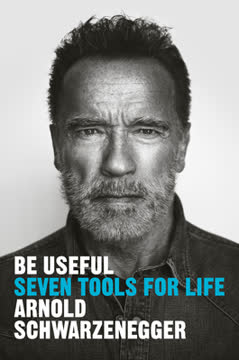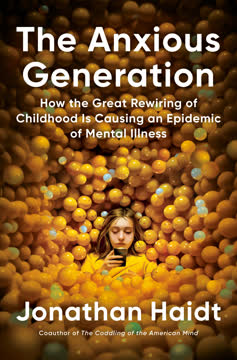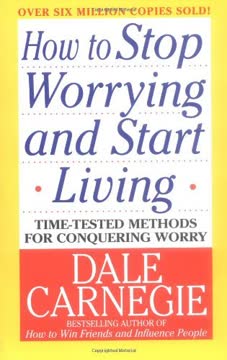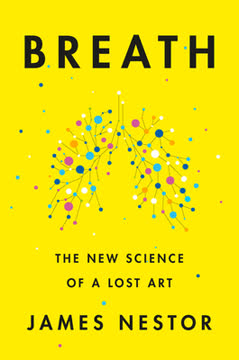Key Takeaways
1. Your life is a canvas: Embrace the creative process
"You can create your life in the same way an artist develops a work of art."
Embrace your inner artist. Like a painter facing a blank canvas, you have the power to create the life you envision. This process involves three key elements: mechanics (the practical steps), orientation (your mindset), and spirit (your deeper motivations and values). By consciously applying these elements, you can transform your world and broaden the quality of your life experience.
Develop your creative toolkit:
- Vision: Clearly imagine the life you want to create
- Action: Take strategic steps to bring your vision to reality
- Reflection: Regularly assess your progress and adjust course
- Persistence: Embrace the iterative nature of creation
Remember, creating your life as art is not about perfection, but about continuous growth and expression of your true self.
2. Structural tension: The key to achieving your goals
"Structural tension is the best and most powerful structure there is in the creative process."
Harness the power of contrast. Structural tension is created by the gap between your current reality and your desired vision. This tension generates energy and motivation to move towards your goals. By clearly defining both your vision and your current state, you create a dynamic force that propels you forward.
Steps to create structural tension:
- Define your vision in specific, measurable terms
- Honestly assess your current reality
- Hold both vision and reality in mind simultaneously
- Allow the resulting tension to guide your actions
Structural tension works on multiple levels - from short-term projects to long-term life goals. By internalizing this concept, you'll find yourself naturally gravitating towards actions that close the gap between where you are and where you want to be.
3. Overcome oscillating patterns to create lasting success
"In oscillating patterns there are at least two major forces in play. One is a desire for something...usually a goal, a result, or an outcome. However, built into the system is another factor, which somehow says, 'It's not okay to have what you want.'"
Break free from self-sabotage. Many people find themselves trapped in cycles where they achieve success, only to unconsciously undermine it. This oscillating pattern stems from conflicting internal forces - the desire for achievement and hidden beliefs that success is somehow dangerous or undeserved.
Steps to overcome oscillation:
- Identify your recurring patterns of success and reversal
- Uncover hidden beliefs that may be sabotaging your progress
- Challenge and reframe these limiting beliefs
- Focus on creating structural tension without conflicting concepts
By recognizing and addressing these underlying patterns, you can create a more stable foundation for long-term success and growth.
4. Eliminate limiting concepts and beliefs
"Do not spend any time trying to change your beliefs. Stop the self-manipulation. Instead, think in terms of what you want to create, not who you think you are."
Focus on creation, not identity. Many self-help approaches emphasize changing beliefs or boosting self-esteem. However, this often reinforces the very limitations we're trying to overcome. Instead, shift your focus to what you want to create, regardless of your current self-concept.
Steps to eliminate limiting concepts:
- Identify concepts that may be holding you back (e.g., fear of success, unworthiness)
- Acknowledge these concepts without trying to change them
- Redirect your energy towards your goals and desired outcomes
- Allow your actions and results to speak louder than your beliefs
By separating your creative process from your self-concept, you free yourself to pursue your goals without the baggage of limiting beliefs.
5. Develop your learning style and embrace continuous growth
"Learning, especially in this form, is an ongoing, lifetime process."
Become a lifelong learner. To create your life as art, you must continually develop your skills, knowledge, and understanding. This requires embracing both formal and informal learning opportunities, as well as learning from both successes and failures.
Strategies for effective learning:
- Identify your preferred learning style (e.g., visual, auditory, kinesthetic)
- Seek out diverse learning experiences that challenge your assumptions
- Reflect on your experiences to extract valuable lessons
- Apply new knowledge and skills to your creative process
Remember that learning is not always comfortable. Embrace the discomfort of growth and view challenges as opportunities to expand your capabilities.
6. Create a holistic health strategy for optimal performance
"Part of creating your life as art has to do with you as the creative force in your own life-building process. So let's take a moment to think about your health, because, to have the necessary stamina to create the life you want, you must manage your health."
Prioritize your well-being. Your health is the foundation upon which you build your life's work. A holistic approach to health encompasses physical, mental, and environmental factors, all of which contribute to your overall vitality and creative capacity.
Key elements of a holistic health strategy:
- Nutrition: Choose whole, nutrient-dense foods
- Exercise: Incorporate aerobic, strength, flexibility, and agility training
- Relaxation: Practice stress-reduction techniques
- Sleep: Prioritize quality sleep for physical and mental restoration
- Environment: Create a healthy living and working space
By investing in your health, you ensure that you have the energy, clarity, and resilience to pursue your creative goals with vigor.
7. Design multiple "vehicles" to navigate different aspects of life
"Think of a vehicle as a container in which you can travel. Just as a car is a vehicle, your body is a vehicle. Your personality is another type of vehicle. Your clothing style is another vehicle."
Cultivate adaptability. Just as an artist may work in multiple mediums, you can develop different "vehicles" or personas to navigate various aspects of your life. This doesn't mean being inauthentic, but rather expanding your range of expression and adapting to different contexts.
Steps to develop effective vehicles:
- Identify the different roles and contexts in your life
- Define the skills, attributes, and behaviors needed for each
- Consciously develop and refine these vehicles
- Practice switching between vehicles as needed
By consciously creating and refining these vehicles, you increase your ability to navigate diverse situations while remaining true to your core values and aspirations.
Last updated:
FAQ
What's Your Life As Art about?
- Creative Life Approach: The book by Robert Fritz presents the idea that life can be crafted like a work of art, encouraging active involvement in shaping one's life.
- Transformative Process: It explores how to identify what you want to create, understand your starting point, and generate energy and momentum for your journey.
- Artistic Framework: Fritz uses the creative process as a framework for self-actualization, viewing life as a canvas for personal expression and growth.
Why should I read Your Life As Art?
- Practical Guidance: The book offers actionable advice on applying the creative process to everyday life, making it relevant for personal and professional enhancement.
- Self-Discovery: It encourages self-exploration and understanding of true desires, helping align actions with aspirations.
- Empowerment: By adopting a creator's mindset, readers can take control of their lives, leading to greater fulfillment and satisfaction.
What are the key takeaways of Your Life As Art?
- Creative Process: Understanding the mechanics, orientation, and spirit of the creative process is essential for creating a fulfilling life.
- Structural Tension: Introduces the concept of structural tension as a dynamic that bridges the gap between current reality and desired outcomes.
- True Desire: Emphasizes identifying true desires, which are self-generated and independent of external circumstances.
What is structural tension in Your Life As Art?
- Definition: Structural tension is the dynamic created by holding two contrasting images in mind: your desired outcome and your current reality.
- Mechanics of Action: It generates motivation and action toward achieving goals by establishing a roadmap for actions.
- Long-Term Success: Understanding and managing structural tension is crucial for long-term success and personal growth.
How can I identify my true desires according to Your Life As Art?
- Self-Reflection: Engage in self-reflection to distinguish between desires influenced by external factors and those genuinely self-generated.
- Avoiding External Influences: Advises against seeking desires based on societal expectations or materialistic goals, as these can lead to dissatisfaction.
- Focus on Internal Values: True desires align with core values and aspirations, identified through introspection and honest self-assessment.
How does Your Life As Art redefine the concept of success?
- Success as a Creative Process: Redefines success not just as achieving goals but as engaging in the creative process itself.
- Personal Definition of Success: Encourages defining success based on personal values and aspirations for a more fulfilling experience.
- Embracing Failure: Highlights that failure is a natural part of the creative process and should be embraced as a learning opportunity.
How can I apply the principles from Your Life As Art to my daily life?
- Daily Reflection: Incorporate daily reflection to assess desires and actions, ensuring alignment with true aspirations.
- Set Goals: Use structural tension principles to set clear, actionable goals bridging the gap between current reality and desired outcomes.
- Embrace Creativity: Approach challenges with a creative mindset, allowing for flexibility and innovation in problem-solving.
What are some practical exercises from Your Life As Art?
- Mapping Your Vehicles: List different roles or vehicles in life, identifying skills and attributes needed for effectiveness.
- Establishing Structural Tension: Write down a specific goal, describe current reality, and outline action steps with due dates.
- Reflective Questions: Regularly ask reflective questions like, “What do I need to learn?” to maintain a learning orientation.
How does the author suggest I simplify my life in Your Life As Art?
- Clarity of Purpose: Encourages clarifying what is truly important to eliminate unnecessary complexity.
- Hierarchy of Values: Establishing a hierarchy of values helps prioritize actions and decisions, focusing on what truly matters.
- Avoiding Overcommitment: Recognizing limits and avoiding overcommitment to projects or activities that do not align with true desires.
How does Your Life As Art address the concept of learning?
- Learning as a Way of Life: Emphasizes that learning is essential for personal growth and creativity, encouraging continuous exploration.
- Dealing with Adversity: Discusses how hardships can be powerful teachers, prompting deeper self-reflection and growth.
- Open to New Experiences: Advocates for being open to new ideas and experiences to enhance the creative process.
What role do people play in creating your life as art according to Your Life As Art?
- Supportive Relationships: Surrounding yourself with supportive individuals is crucial for fostering creativity and achieving goals.
- Collaborative Creation: Highlights the importance of collaboration and how the right people can contribute to the creative process.
- Evaluating Relationships: Encourages assessing relationships to determine who adds value, creating a nurturing environment for growth.
What are the best quotes from Your Life As Art and what do they mean?
- "Your life can be your work, and you can be its author.": Emphasizes the power to shape one's life and experiences, like an artist creating art.
- "The creative process is the most successful process for accomplishment in history.": Highlights creativity's importance in achieving success, suggesting a creative mindset leads to accomplishments.
- "You can’t avoid it. If you shave, put on makeup, choose your own clothes... you are making decisions that impact your life.": Underscores that every decision contributes to the overall creation of one’s life.
Review Summary
Your Life As Art receives mostly positive reviews, with readers praising its practical approach to creativity and personal growth. Many find the book inspirational and helpful in shifting their perspective on life. Key concepts like structural tension and eliminating limiting beliefs resonate with readers. Some appreciate the balance between dreaming and acting, while others find it occasionally overenthusiastic. Overall, reviewers recommend the book for those seeking actionable advice on creating a meaningful life, despite a few critiques of its style.
Similar Books










Download PDF
Download EPUB
.epub digital book format is ideal for reading ebooks on phones, tablets, and e-readers.






